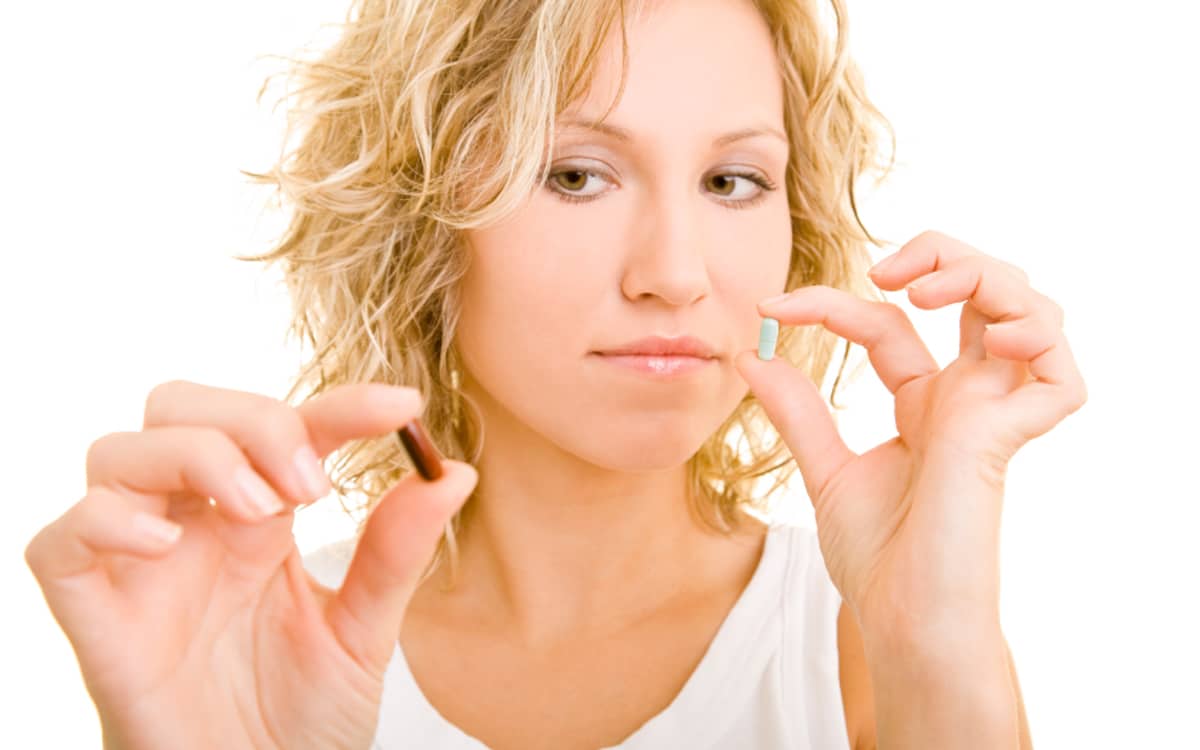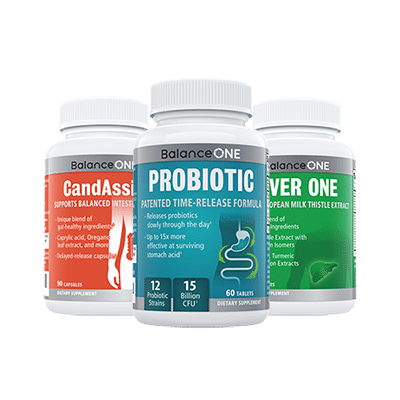Can You Take Probiotics & Antifungals Together?

The Candida Diet involves a two-pronged approach to treating your yeast overgrowth: killing the yeast itself, and then restoring your healthy gut bacteria.
The low-sugar anti-Candida diet and natural antifungals work to eliminate the yeast overgrowth by depriving the yeast of its food sources and destroying the Candida cells. At the same time, the probiotics help to replenish your gut with good bacteria.
However, you may have read that you shouldn’t take probiotics and antifungals at the same time. This can cause some confusion, especially when you’re already trying to manage which foods you should and shouldn’t eat!
This claim is based on the idea that many antifungal treatments also have antibacterial properties. In this sense, it would seem that the supplements cancel each other out.
Fortunately, this isn’t quite the case. Taking probiotics and natural antifungals is an essential part of the Candida treatment plan – and yes, you should be taking them together.
Table Of Contents
Probiotics Work With Antifungals to Control Yeast
Researchers have found that combining probiotics and antifungals is a powerful way to restore beneficial bacteria and reduce harmful fungi in the gut.
In a study published in Digestive and Liver Disease, antifungals were shown to control the overgrowth of yeast and fungi by breaking down biofilms. At the same time, probiotics helped to restore and maintain the balance of gut flora in those with inflammatory bowel diseases (IBD) like Crohns.
Interestingly, the researchers also found that members of the same family who have IBD also tend to have both yeast overgrowth and bacterial imbalances in their gut microbiome. These organisms appeared to join forces to make robust biofilms that made intestinal inflammation even worse.
Another benefit of taking probiotics alongside antifungals is that they will help support your normal digestive processes. When on the Candida Diet, you may suffer some ill effects of yeast die-off, which can include bloating, gas, indigestion and other issues. This is due to the Candida yeast releasing unpleasant toxins as it is broken down by the antifungals.
A quality probiotic supplement can prevent these digestive symptoms, reducing bloating and diarrhea. These beneficial bacteria help to break down the food as it moves through your intestines, allowing your body to absorb nutrients more efficiently, while also easing discomfort.
Even more importantly, probiotics will support your immune system as your body fights the Candida yeast. Up to 80 percent of your immune cells are found in your gut, so this is the best place to focus your efforts!
Probiotics Help To Reduce Any Side Effects From The Antifungals
There’s a big difference between antifungals and antibiotics. Antifungals kill yeast and fungal overgrowth. Antibiotics, on the other hand, kill bacteria. Some antifungal agents, for example garlic and caprylic acid, do have antibiotic properties.
Studies have shown that it’s not only possible to take probiotics with antifungals and antibiotics, but it’s beneficial, too. Antibacterial treatments can cause digestive symptoms such as bloating and diarrhea, but probiotics can help to prevent them.
For example, it’s believed that antibiotics causes diarrhea in about one in three patients. Symptoms usually begin on the last few days of the antibiotics course, or just after the course is finished. Although most cases of antibiotic-associated diarrhea will go away within a few days without treatment, some people can become very ill.
In a study published in the Journal of the American Medical Association, researchers reviewed 63 randomized trials involving the benefits taking probiotics alongside antibiotics. Those who took antibiotics as well as probiotics were 42% less likely to develop diarrhea than those who took a placebo.
The study also showed the number of patients who ended with C difficile-associated diarrhea while taking probiotics was reduced by 66%.
Probiotics help to reduce the side effects of antibiotics, or even antifungals that have antibacterial properties, by restoring a natural balance in your gut.
How To Get The Most Out Of Your Probiotics and Antifungals
Here are three suggestions for using probiotics and antifungals together during your Candida treatment.
1. Find a high-quality probiotic
First of all, it’s important to choose a good probiotic supplement that will deliver the benefits you require. Look for a high-quality probiotic that contains multiple strains of probiotic bacteria and a high CFU count (colony-forming bacteria).
Don’t forget what is arguably the most important part of any probiotic – the delivery system. If your probiotic uses regular vegetable capsules, almost all of its bacteria will likely be destroyed by stomach acid. Look for a probiotic that uses time-release tablets, like the Balance ONE Probiotic that I helped to formulate.
2. Use a selection of antifungals
Next, choose a selection of natural antifungals. Take them together, instead of rotating them, as this reduces the risk of the yeast becoming resistant to one particular antifungal. Good antifungals include caprylic acid, berberine, undecylenic acid, and garlic extract. I recommend the CandAssist formula from Balance ONE that contains 7 natural antifungals in a delayed-release capsule.
3. Take them at different times of day
While you can certainly take both probiotics and antifungals during your Candida treatment, it’s a good idea to take them at different times of the day. This will help prevent any of the antibiotic properties in your antifungals killing off the probiotics, and therefore maximizing the chance for your probiotics to colonize your gut.
You could do this by taking your antifungals in the morning with breakfast, and your probiotics at night with dinner. Or, simply try to leave at least an hour or two between your probiotic dose and your antifungal dose.
4. Don’t introduce them at the same time
You should always allow for a period of adjustment between large changes in your diet or supplement regimen.
If you introduce probiotics and antifungals at the same time, it can potentially lead a Candida die-off symptoms. This happens when large numbers of yeast are killed off at the same time, and it typically leads to flu-like symptoms and fatigue.
That’s why I recommend starting with the Probiotic, and then leaving at least a week before you add the CandAssist. This will support your gut health and fight Candida while reducing the chance of any die-off symptoms.

3-Month Candida Elimination Kit Start Your 3-month Candida Cleanse
This Candida Kit contains all the supplements recommended on the Candida Diet:
- LIVER ONE to process and remove the toxins created by Candida.
- CANDASSIST to inhibit and weaken the Candida colonies in your gut.
- PROBIOTIC to replace the Candida yeast with probiotic bacteria.
Plus... the CANDIDA DIET RECIPE BOOK with 50+ low-sugar recipes

Hi, I currently take a probiotic and the Liver Cleanse. I am going to introduce the Candida Cleanse formula as well. I know I have to take the probiotic and Candida Cleanse at different times during the day. Is it ok to take these 3 in one day (at different times during the day)?
Yes, you can take all three. Just make sure to take the Probiotic and Candida Cleanse at least an hour apart. It’s also a good idea to take them all with food if possible 🙂
I would like all three remedies where can l buy them in the uk? Hopefully they may help my yeast intolerance,what do you think?
Hi Annette, you can find all three supplements on balanceone.com. Shipping to the UK is US$9.95, or completely free for orders over US$100. Lots of my readers have found them helpful for their yeast issues 🙂
Best,
Lisa